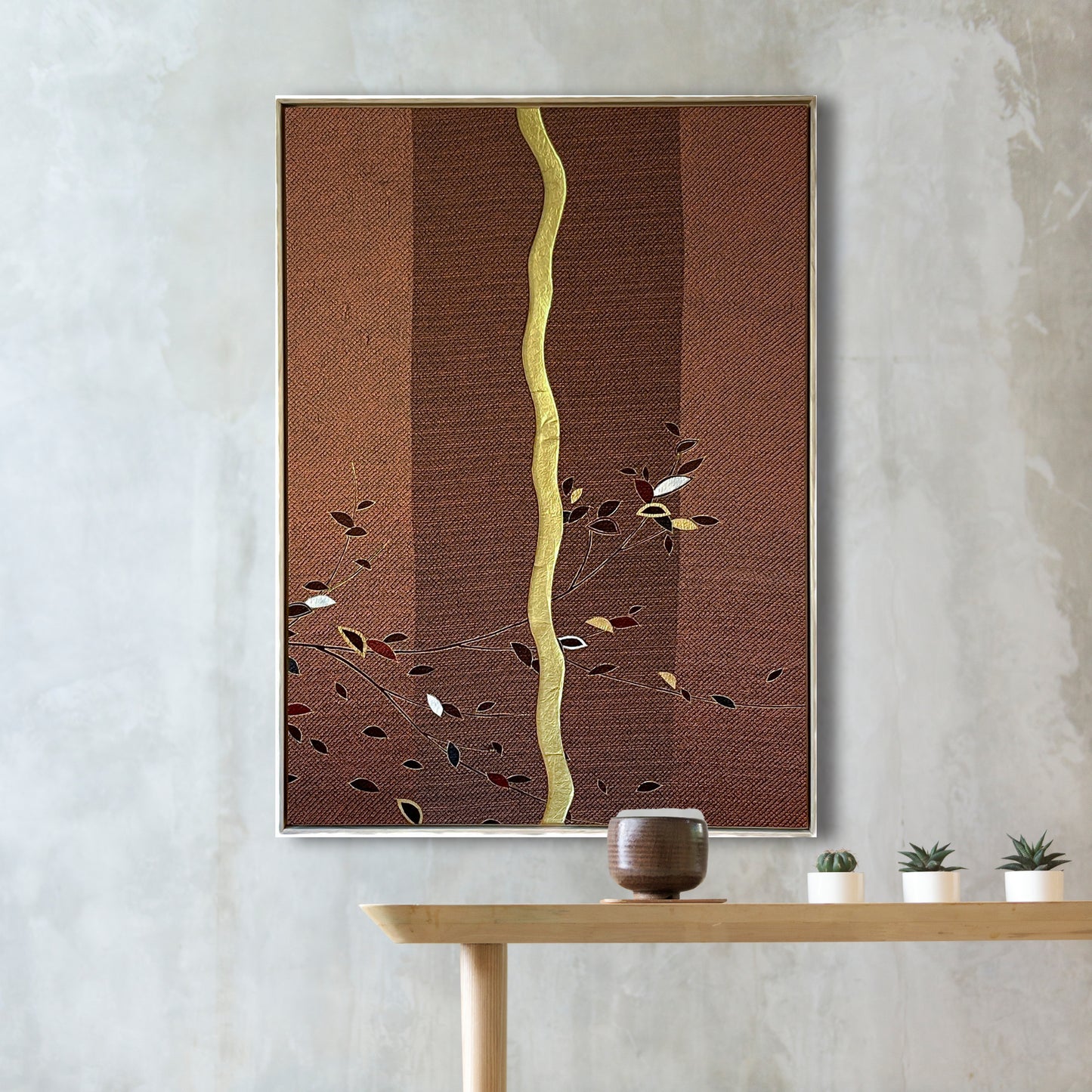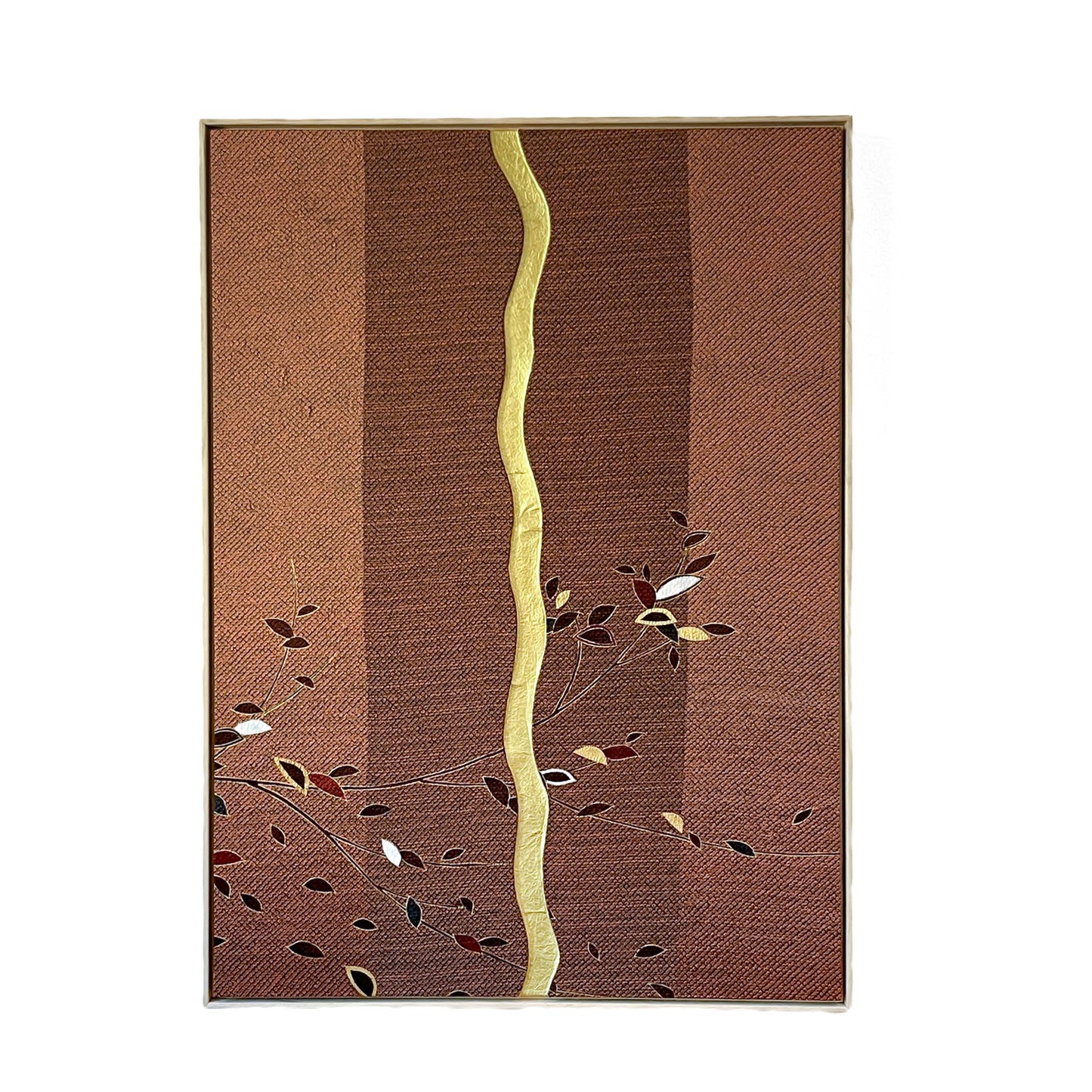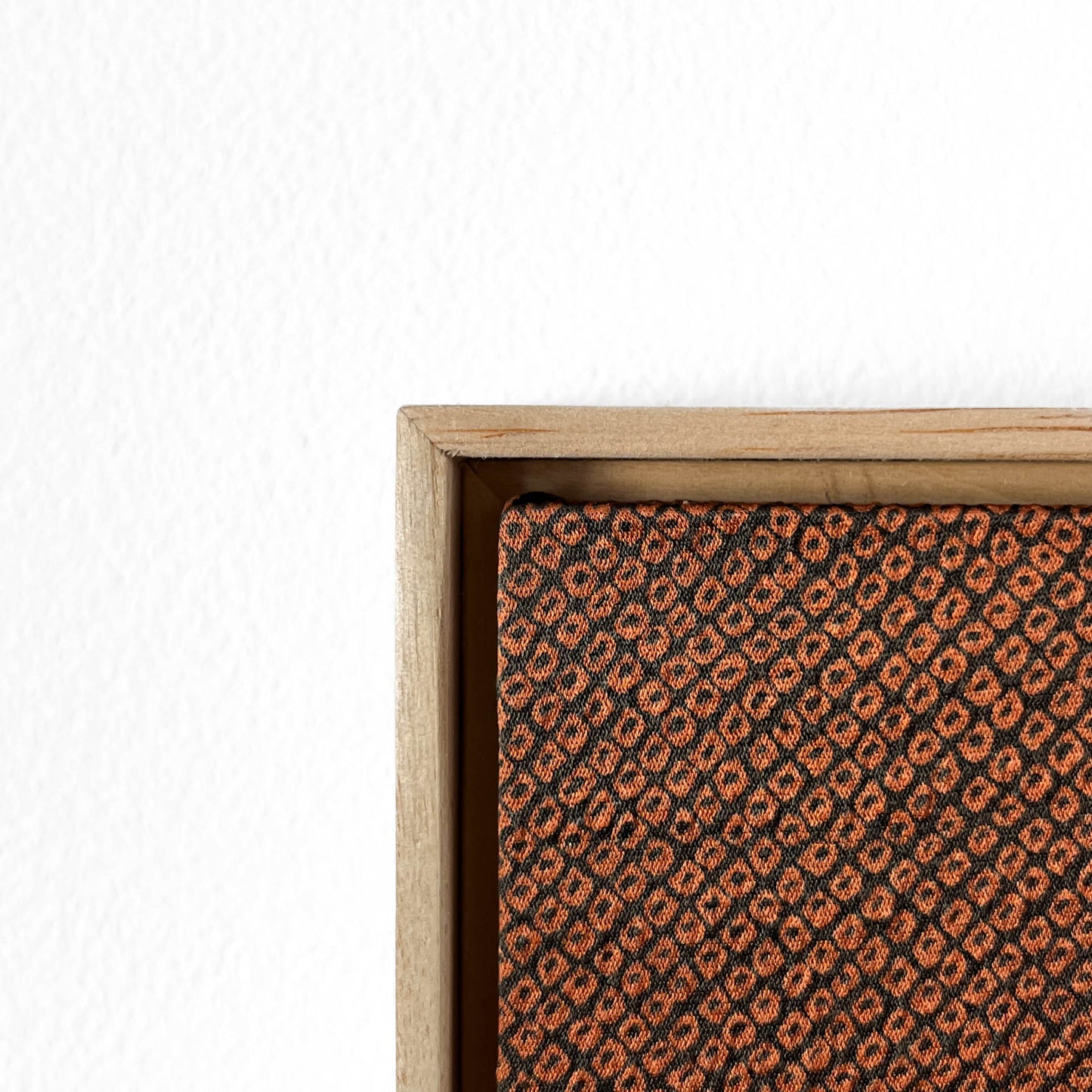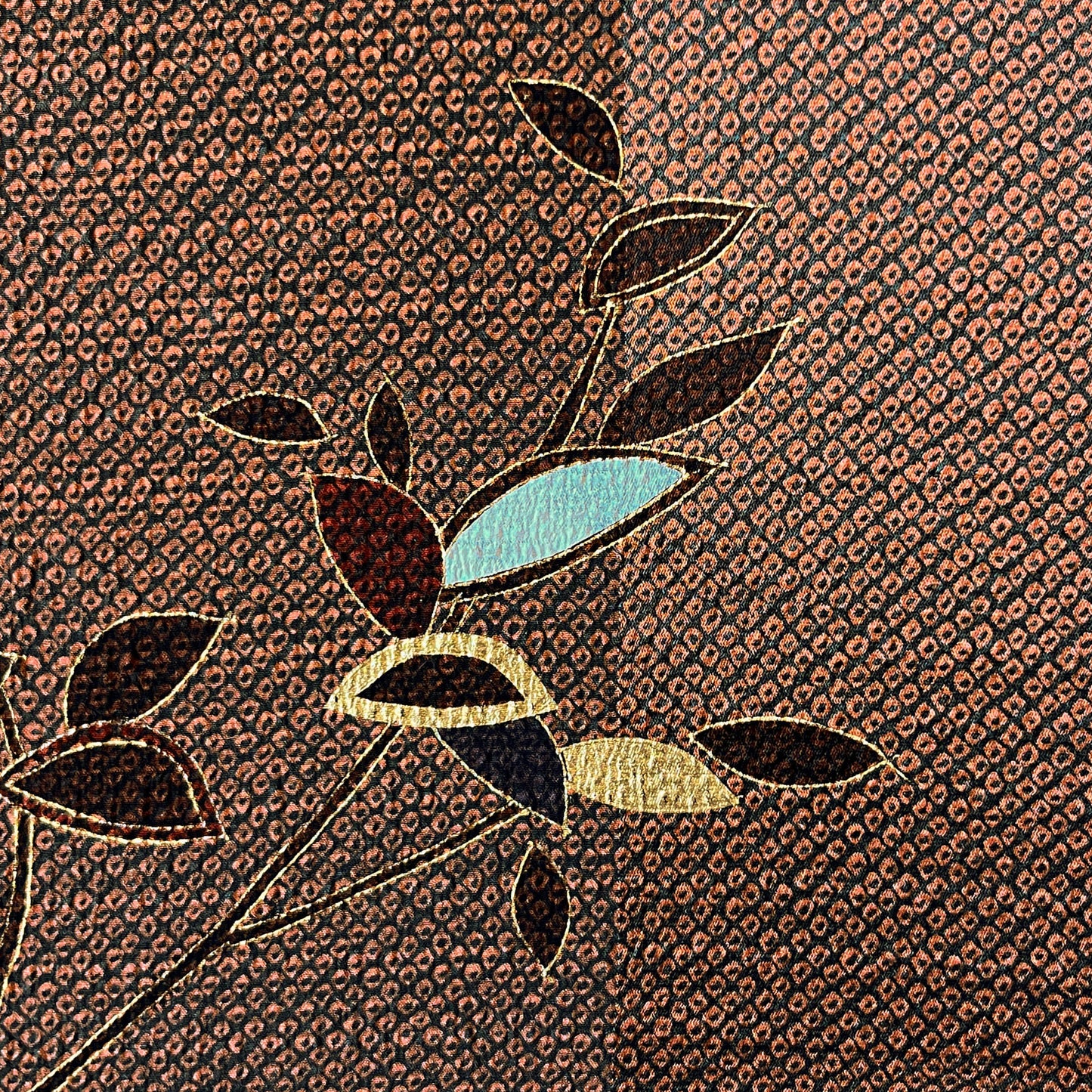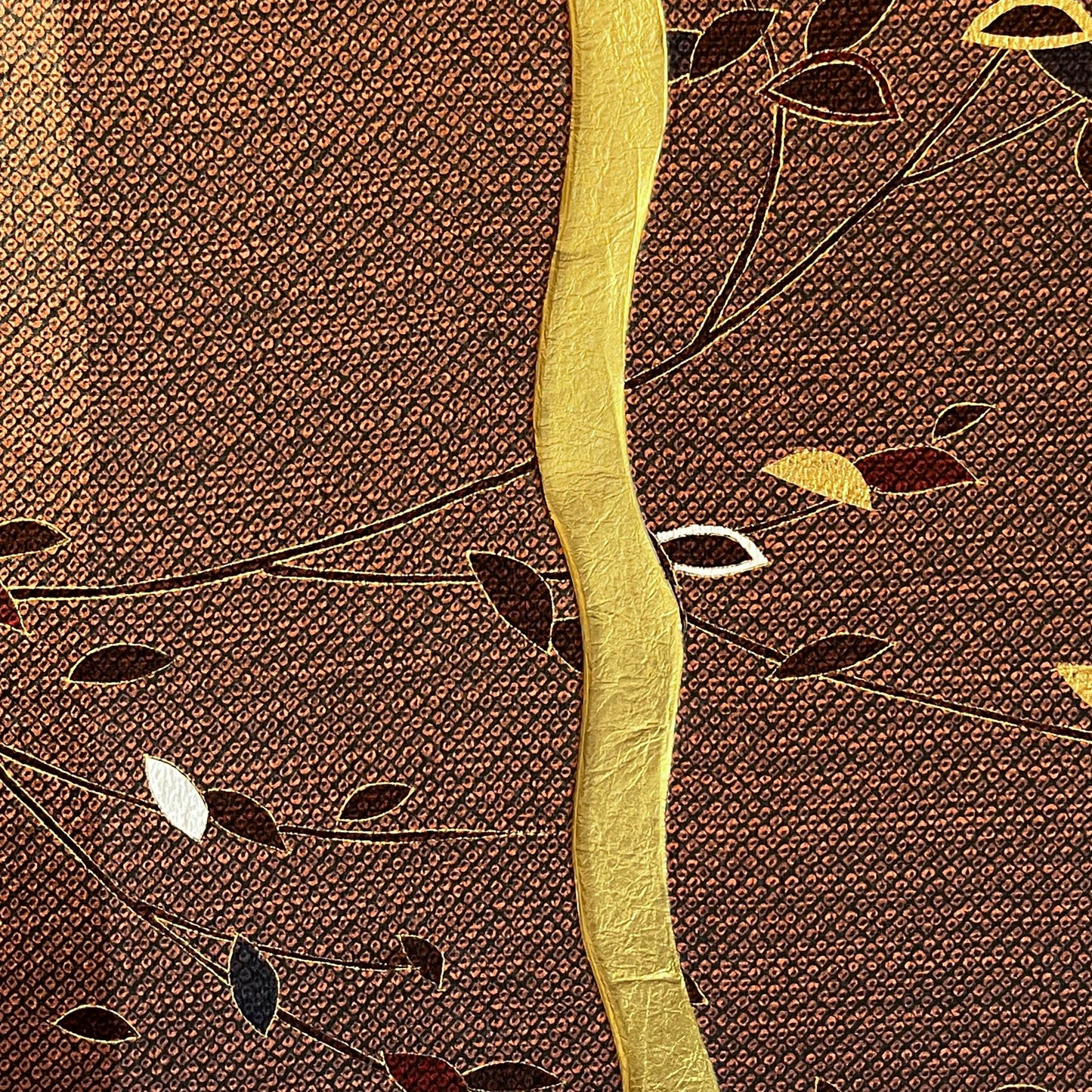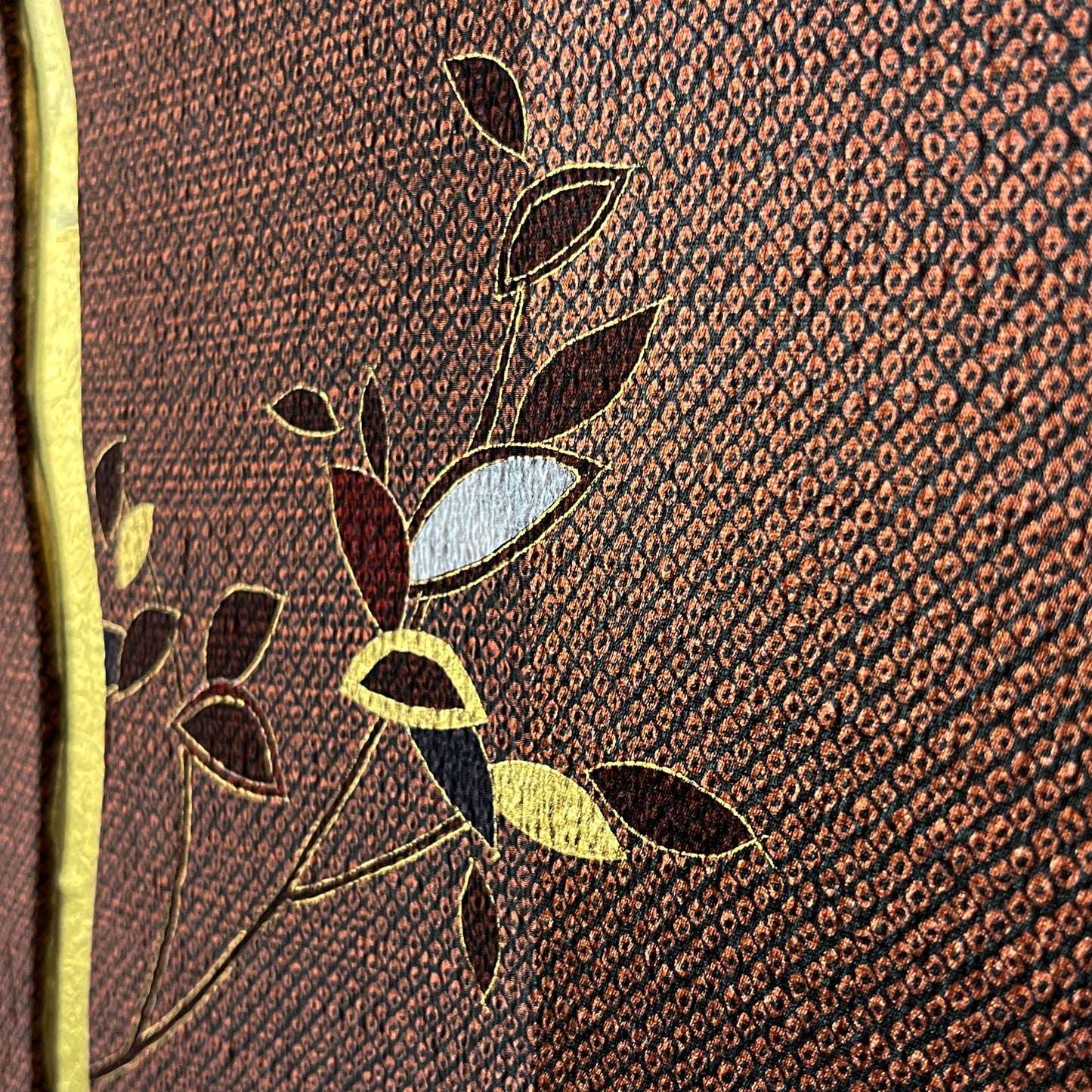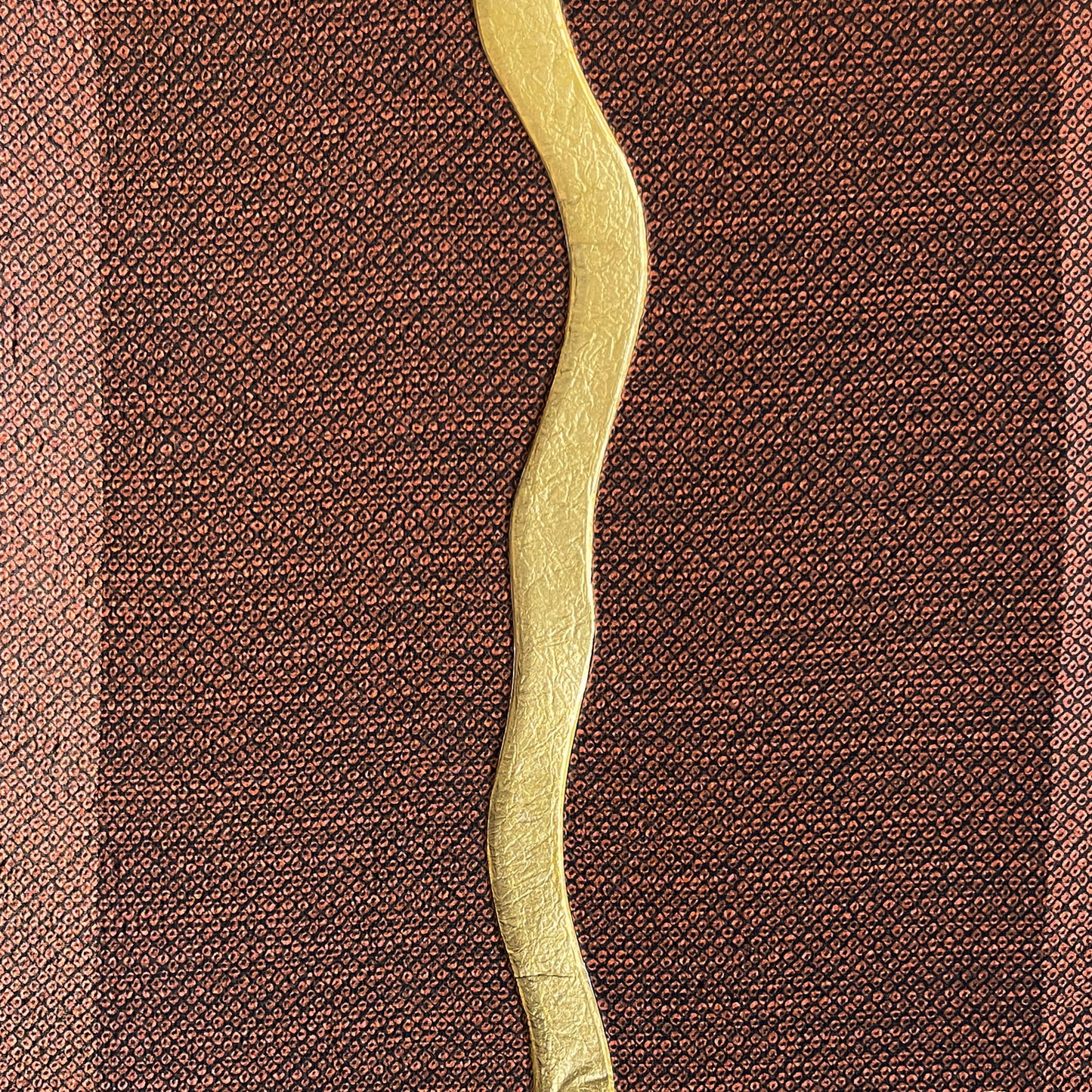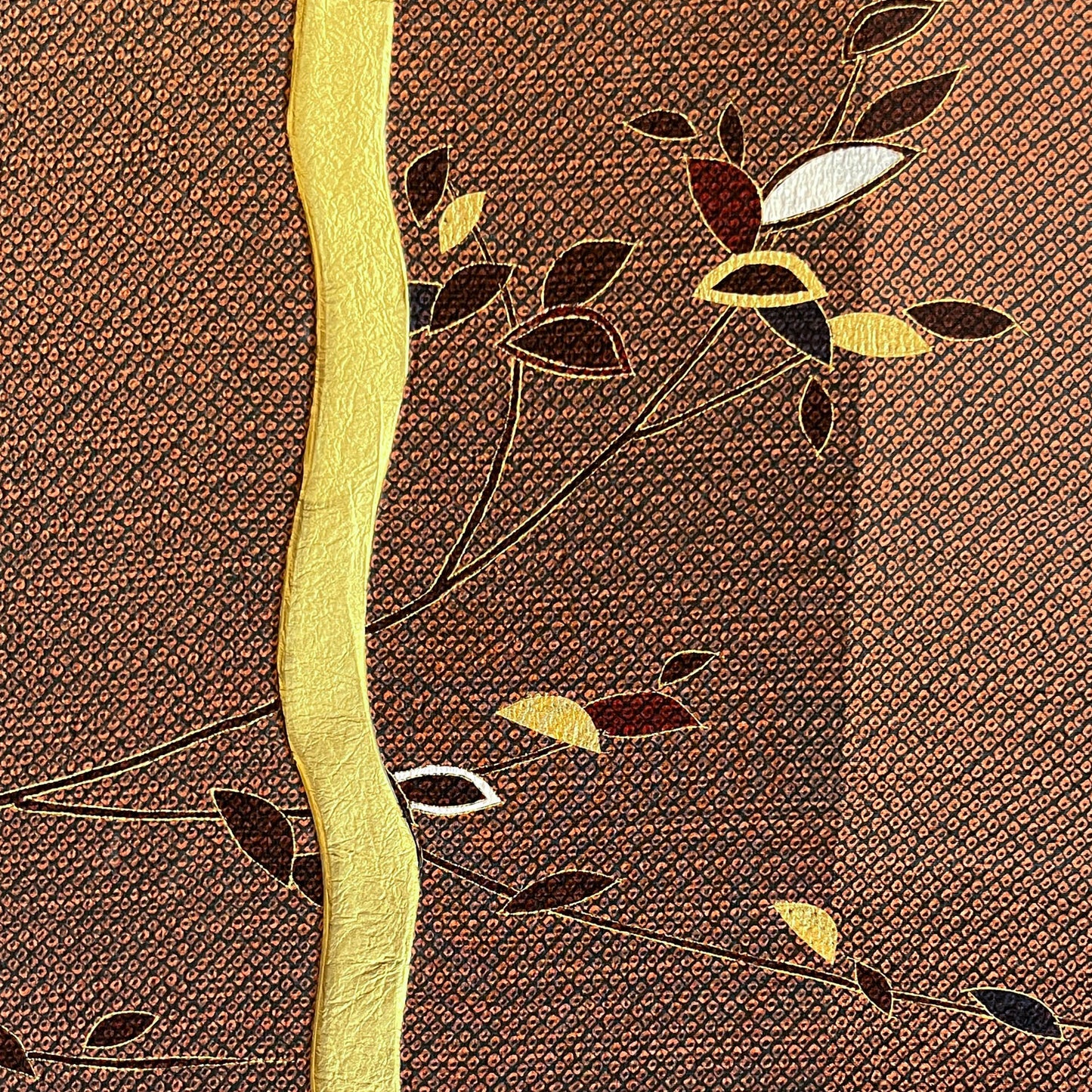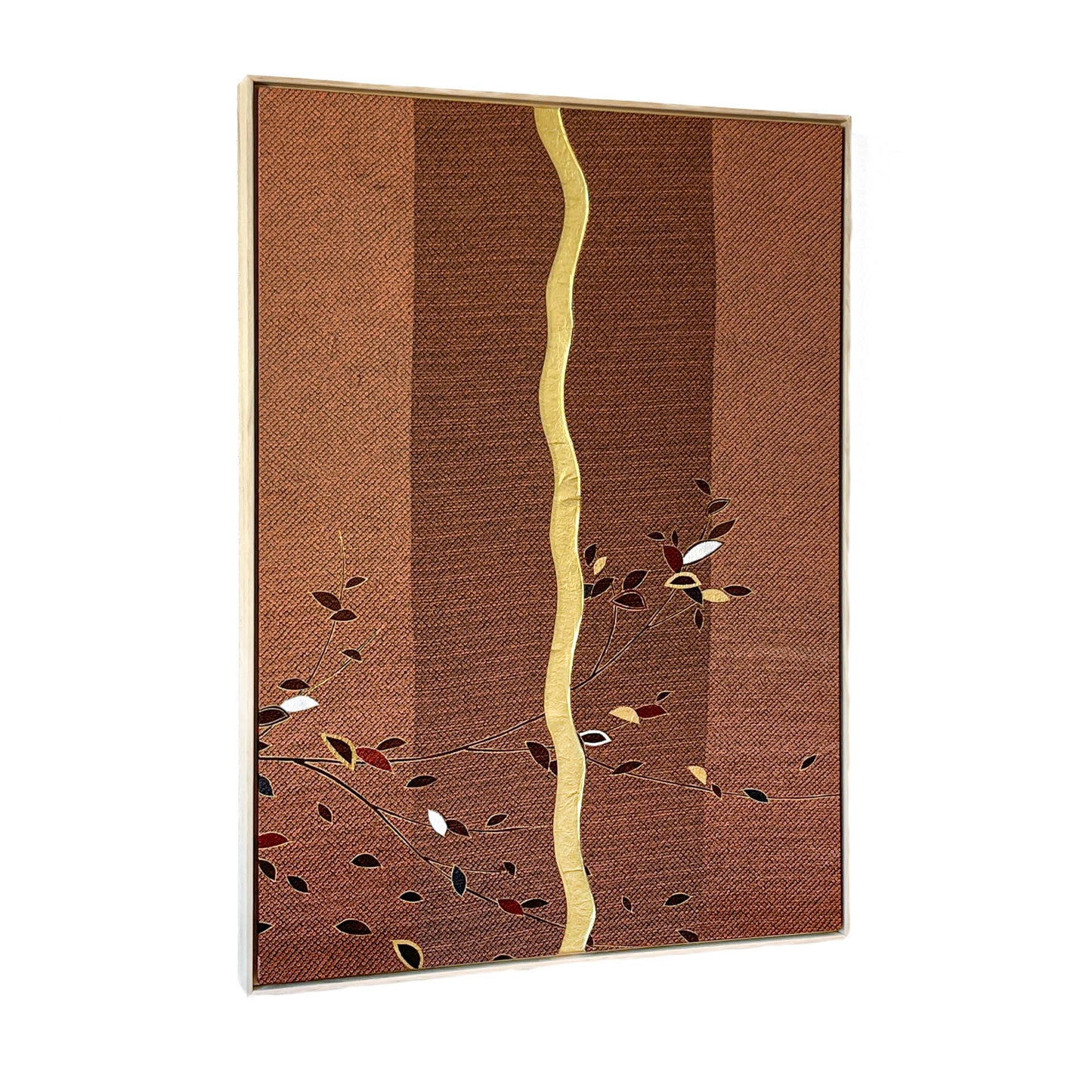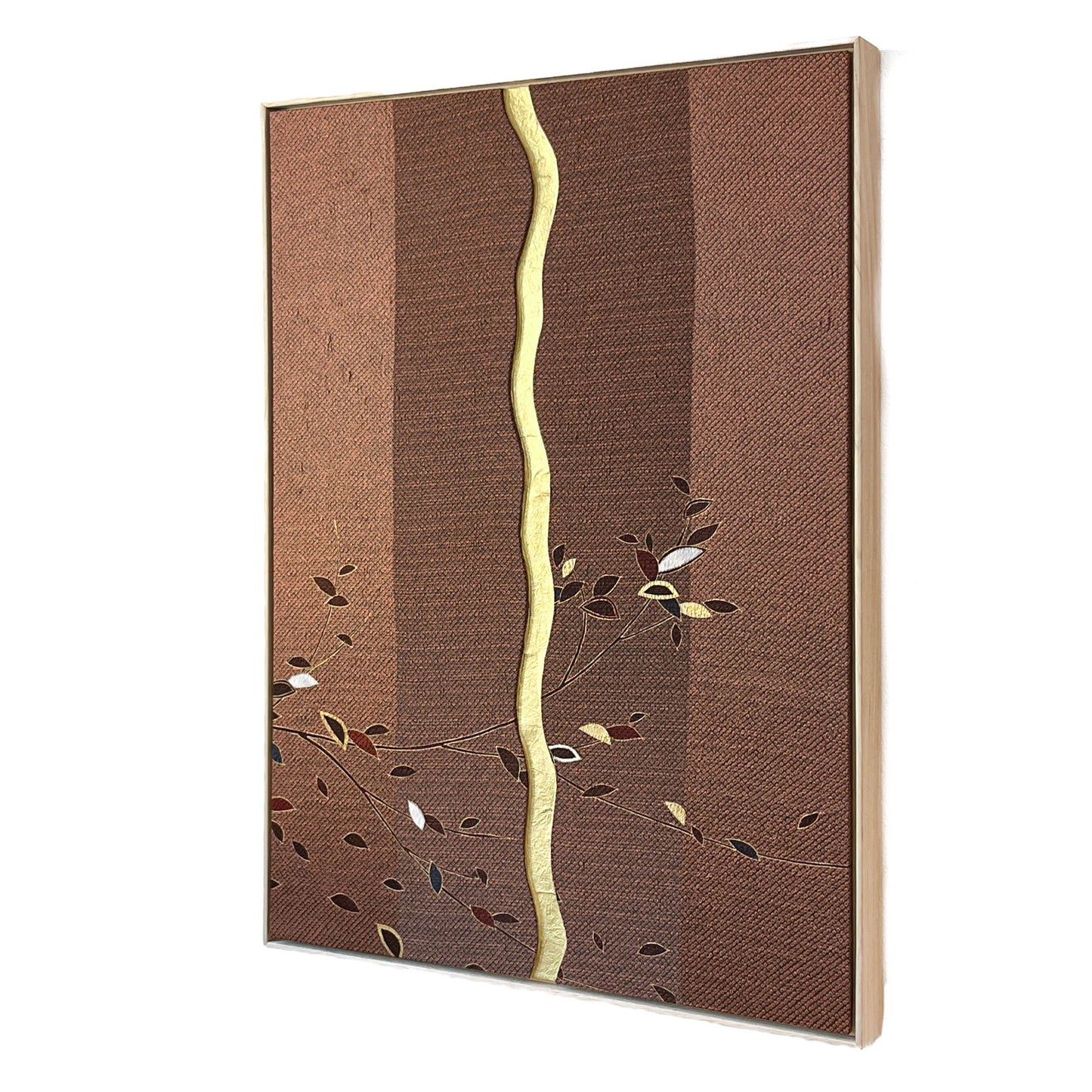Autumn branches ~Kintsugi~
Autumn branches ~Kintsugi~
Verfügbarkeit für Abholungen konnte nicht geladen werden
Size
73cm x 53cm x 5cm
Materials
silk (outside-layer) , wooden frame (under-layer), washi paper
Story behind the work
The frame for this work is made of paulownia wood taken from antique Kiritansu - chest-of-drawers for kimono.
I use antique kiritansu that can’t be used as furniture anymore to create basis and frames for my works. It adds them even more authentic atmosphere of traditional wabisabi spirit. Can you feel it?
The piece uses the concept of "kintsugi" - it "unites" the pieces of antique kimono back together with golden washi paper to give it a second wind as art work.
Period / Story
The kimono used in this piece was originally crafted during the late Showa period (1960-80ies).
Explanation of colors and patterns
This piece features a modern arrangement with gold Japanese traditional washi paper running through the shades of brown stripes depicting branches and leaves.
The shades of brown stripes, upon closer inspection, reveal intricate "fawn pattern 鹿の子模様" dyeing, adding depth and complexity to the design. The origin of the "fawn pattern" lies in a tie-dyeing technique called "fawn pattern tie-dyeing," where the cloth is folded into quarters around a circular point and repeatedly tied with thread about seven to eight times before dyeing. The areas tied with thread remain white and square-shaped, with the tips of the corners lightly dyed to appear as dots, resembling the white spotted patterns on a fawn's back, hence the name. Deer are considered messengers of the gods and symbols of good fortune, vitality, and fertility, often used to represent "prosperity in descendants."
The depicted branches and leaves are delicately outlined with gold leaf, making the pattern stand out from the background and adding subtle elegance.
During the late Edo period (19th cent.), the shogunate enacted laws prohibiting luxury, leading townspeople in Edo to incorporate delicate nuances into dark colors like brown and gray, resulting in a wide range of colors and new "color names" being coined on various occasions, creating a diverse array of colors known as "Forty-eight Teas and a Hundred Mice 四十八茶百鼠."
Characteristics of the fabric
"Kimpaku" (金箔) -technique of gold dyeing on leaves, refers to the application of gold leaf onto various surfaces. In the context of kimono, kimpaku is used as a decorative technique to add luxuriousness, elegance, and a sense of opulence to the textile. Kimpaku is used to create intricate patterns, motifs, or designs, adding shimmering accents and highlights.
Kimpaku is used here to embellish traditional motif of leavevs, enhancing the overall aesthetic appeal of the fabric.
The process of applying kimpaku requires skill and precision. Ultra-thin sheets of gold leaf are carefully adhered to the fabric using an adhesive. Artisans use specialized techniques such as hand-painting or stenciling to create the desired design before applying the gold leaf. After the gold leaf is applied, it is delicately burnished to ensure a smooth and even finish.
Kimpaku has been used in Japanese textiles for centuries, particularly in garments worn by the nobility and aristocracy. Today, it continues to be employed in the creation of high-end kimono for special occasions such as weddings, ceremonies, or formal events, like this piece.
The use of kimpaku in kimono represents a fusion of artistic expression, craftsmanship, and cultural tradition. It serves as a symbol of wealth, prosperity, and refinement, adding a touch of extravagance to the fabric and elevating its status as a work of art.
About the frame
This artwork frame is crafted from paulownia wood, a uniquely Japanese material closely tied to the world of kimonos, and it serves to convey the refined beauty of Japanese nature.
Paulownia wood is known as the lightest wood in Japan, prased for its natural luster, resistance to moisture, and resilience against cracking. Since ancient times, it has been used in crafting furniture, chests, and musical instruments.
Paulownia wood is closely linked to kimono culture. During the Edo period, it became customary to store cherished kimonos in paulownia chests, which offered fire resistance and protection from moisture and insects.
Traditionally, when a daughter was born, a paulownia tree would be planted. Upon her marriage, the tree would be cut down, and the wood would be used to craft a chest for her as a wedding gift.
Following the Ansei Earthquake during the late Edo period in 1855, paulownia chests gained popularity due to their ability to withstand fires and even float in water, thereby safeguarding their contents during floods.
Decoration Advice
Canvas can be displayed on a table, wall, etc. Hanging on a wall requires hooks, tacks or nails. It can also be displayed propped up on an easel. Ideal for a room makeover, housewarming gift, present, or souvenir for a loved one.
Precaution
All the works are made from real kimonos, antiques and vintages. For this reason, the fabric may have traces of long-term use and minor fabric damages. In case there are any scratches or stains, we always add a photo of the area on the item page, so please check before purchasing. Regarding precaution, cancellation and refund policy, please refer to the refund policy in the footer section of the site for information.
